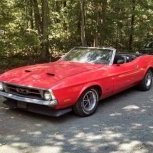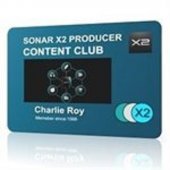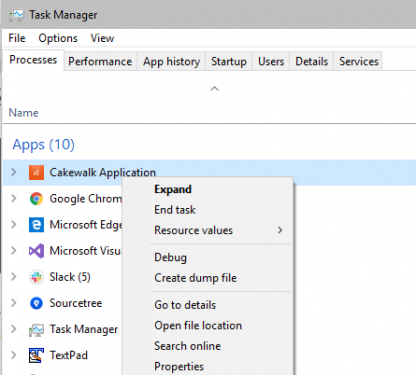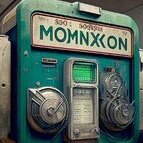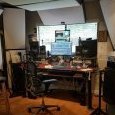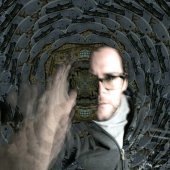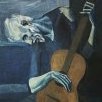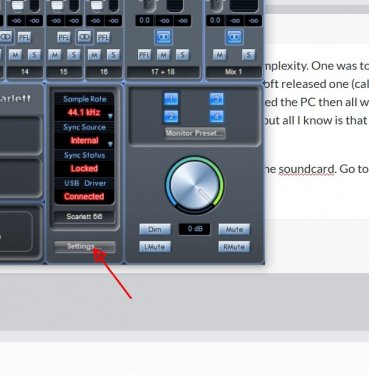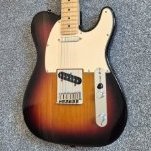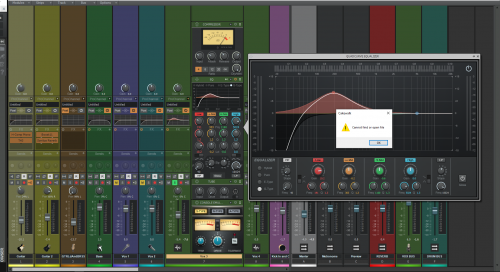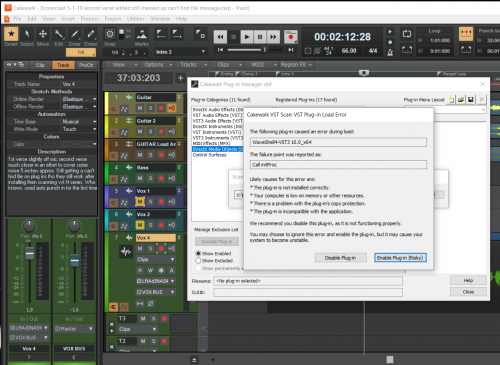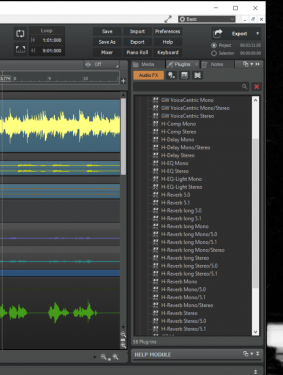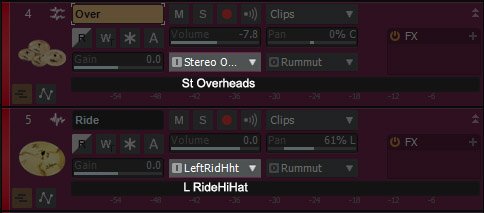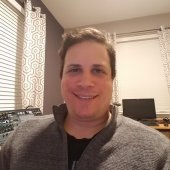Leaderboard
Popular Content
Showing content with the highest reputation on 05/19/2019 in all areas
-
Hi folks, Most have probably seen that we have a new release out - see above link. It wasn't planned but it has ended up being one of the strongest releases since we started CbB - a fitting tribute to our one year anniversary! Not only did we finally do ARA2 which has been in planning for some time, but we tackled some tricky and long overdue improvements to editing in general. The bullets in the product announcement cover a lot of ground but I'll highlight a few notable improvements: Slip editing (cropping) and stretching clips is now far more robust for all data types (MIDI, audio and ARA clips). Edits are now managed accurately even when doing combinations of operations such as cropping followed by stretching or vice versa. Edits should also be preserved across undo and redo. Multi clip time stretching, an often requested feature, allows you to easily time stretch clips on multiple tracks by the same amount. Elastique time stretching is improved and sounds better. When using ARA clips there is a lot of new goodness especially with ARA 2 plugins. This is our biggest ARA refresh since 2013 when it was first implemented and there are numerous optimizations and improvements behind the scenes. If you have Melodyne you will notice that all edits like dragging or cropping and stretching clips now have real-time preview in Melodyne. This makes it easier to align with other tracks when editing. Track and clip selection are now fully mirrored via ARA 2 allowing Melodyne to follow your clips and track selection. You can set Melodyne to automatically hide and show blobs automatically based on your selection. It will also respond to renaming tracks and clips. There aren't any ARA plugins that respond to color yet but when available they will also respond to the track and clip colors in CbB. All ARA 2 clips now share a common view. So navigating across multiple clips is as simple as clicking on a clip. The view data in Melodyne will automatically change to track the selected clip. Is is a lot faster than double clicking clips to close and reopen a new view. Creating ARA regions as well as MIDI analysis is now more efficient and should be a bit quicker. The Gain knob in the Inspector controls either audio Input Gain or MIDI Velocity Offset for Instrument tracks. This allows you to independently control MIDI velocity for instrument tracks based on whether the Audio tab or MIDI tab is selected in the track inspector. Thanks to several forumites who suggested this useful feature. Playlist view has been widened to accommodate showing more text. Bug fixes: We fixed over 45 bugs this release alone! Not all are listed since some of them were related to the new features. We continue to prioritize making CbB as stable as possible. A small request. For each release we'd like to gather some feedback on how useful or stable it is for you. If you are so inclined please take a moment to rate the product release topic in the forum. (there is now a star rating at the top of the post) Thanks to you all for your support and we hope you enjoy 2019.05 and our upcoming releases this year!4 points
-
Windows is notorious for not coming out of hibernation/sleep properly. The quickest way to check this is save your work and reboot the machine. *If* that resolves it, start digging into the power options you have set. Be aware there is more than just "never sleep"... in the "advanced settings" section (via change advanced power settings) there are things like "USB selective suspend," etc. Be sure to walk through each of those if a reboot fixes the issue.3 points
-
Could indicate Windows went into sleep mode. My experience has been (with any software) is if im not using for more than 5 minutes, shut it down.3 points
-
Why do crashes occur? Crashes occur when an application encounters an unexpected condition. There can be a myriad reasons for this including bugs, memory overwrites, problems in plugins or other third party components or add on's, driver errors as well as actual hardware problems. Minidumps Many crashes can be specific to a particular user's environment, therefore for troubleshooting it's important for developers to be able to do "post mortem" analysis to determine the cause of the crash. When a crash occurs Windows takes a snapshot of the crash and saves a file called a minidump file (.dmp). This file records information about the state of the system when the crash occurred and can be very helpful to diagnose these problems remotely. For problems that are not reproducible such dump files can often be the only means of diagnosis. Locating crash dump files for Cakewalk If you encounter a crash when using Cakewalk you will normally see a crash dialog telling you that a problem occurred. In most cases Cakewalk will automatically save this crash dump for you. This dialog will list the name of the minidump file and also the name of the faulting module. If the crash occurred within the application the module will be Cakewalk.exe itself. If the crash site was inside a plugin the module listed will be the plugin name. Most crashes are reported within the application. While crash location data can be useful, locating the root of the problem often requires further investigation. Minidump files saved from Cakewalk are stored as timestamped files with a .dmp extension in the following folder: %AppData%\Cakewalk\Sonar\Minidumps (for Sonar) %AppData%\Cakewalk\Cakewalk Core\Minidumps (for CbB) You can type that path directly into Windows file explorer and it will take you to the dumps folder where you can locate the file. Note that if the crash was in a plugin the file may be in this folder instead: %AppData%\Cakewalk\Sonar\Minidumps\Plugins (for Sonar) %AppData%\Cakewalk\Cakewalk Core\Minidumps\Plugins (for CbB) You can normally locate a minidump file of interest by its timestamp if you know when the crash occurred. What if the application hangs but doesn't crash? In some cases you may not encounter an actual crash in the app but the application appears hung and unresponsive. In such cases Windows will not save a crash dump file automatically. There are a few ways to manually create a dump file in such cases. The easiest way is to go to task manager and right click the process name (in this case it would be listed as "Cakewalk Application") and then choose "Create Dump File". See attached screenshot. The downside to this method is that it saves a full dump which includes a memory snapshot. These files can be pretty large if you have a lot of RAM. Alternatively if you are familiar with running command line tools you can run the Microsoft Procdump tool and save a minidump. Once you have installed that tool you can capture a minidump by typing this into a command prompt (note you will need to run the command prompt as an administrator by choosing Run as administrator): procdump64.exe -ma Cakewalk.exe cakewalkhang.dmp Sending the dump file to Cakewalk for analysis Once you have the dump file you can put it on a share like dropbox, google drive etc. Next, log a problem report case with Cakewalk and include the link to the dump file. If a Cakewalk staff member has requested info you may also PM the dump file link to them directly this way. Note: Dump files may include personally identifiable data so please do not post links to them publicly in the forums or elsewhere to protect your privacy. Cakewalk currently doesn't automatically submit minidumps via problem reports like SONAR did. Here is an older KB article (from SONAR) with some more information.2 points
-
FWIW I've got the 1st gen 6i6. It works fine for me with a buffer size of 64 (1.5ms), and for very light projects I can go to a buffer size of 32. This is on an old 3rd gen i5 at 3.4Ghz with 16Gb of RAM. I've not experienced any slowdown or crashes for several years, with the exception of the old Melodyne crashing issue (which had a workaround to avoid it). On an i7 with 24Gb of RAM, you should easily be able to run at an ASIO buffer of at least 128, or 256 if you've got hundreds of plugins. Are you using any "lookahead" plugins in your project (e.g. linear phase plugins) ? These sorts of plugins are designed for mixing only, not for recording. Using them will introduce a fair amount of latency (especially with a large buffer size) as they have to read in "x" number of buffers ahead of time to process. This may explain the slowdown. Another possible cause could be bad video drivers, which could explain both the slowdown and the crashes. Another possibility could be bad memory sticks, which I've personally experienced - and it's a nightmare to diagnose. Even mismatched memory sticks can cause crashes (e.g. different makes or different speeds).2 points
-
Here's what I've been working on...definitely a work in progress- Dawn As far as the plugin manager I'll wind up creating my own list, I have a feeling I'll be using Cubase quite a bit Bill2 points
-
2 points
-
I used Waves Q-Clone to compare PA'S emulation to Luftikus (https://www.kvraudio.com/product/luftikus-by-lkjb) and found them to be nearly identical. Download them both and test yourself.2 points
-
These are the smallest fonts in the entire GUI. A bigger font would make them easier to see. And maybe BOLD too. 1 or 2 points bigger would do it. Also make the Track View track numbers BOLD.1 point
-
I would like to see a chord track similar to the one in Studio One 4 Pro, or Cubase. You insert the chord name and you can have individual tracks either follow chord track or not, this is very useful to those of us who are guitar players, and not proficient on piano keyboard. This is a big help also helps trigger ideas when writing. I use Studio one for this now, but I would love to see it implemented in CbB!1 point
-
I would really appreciate addition of phone/tablet formatted version of CbB documentation. I tend to use downtime away from my DAW to catch up on the Cakewalk forum discussions. The forum topics that interest me often include links to CbB documentation which are difficult for me to read on my Samsung S7 phone. To read the documentation I use landscape view and zoom to make text legible which requires me to scroll left/right to read each line.1 point
-
Ok, I'm officially tired of waiting.... SOMEONE SPILL THE BEANS ALREADY!!1 point
-
This works!!!!! Can't tell you how much difference this makes. Can keep the keyboard (which I really like) and both programs work together. Raising a virtual glass to you. Jill1 point
-
Re Melodyne, scook is right. You can do it that way or if Melodyne is just sitting on a clip as FX then you can right click that clip and select "bounce to clip". That means you get a clip with Melodyne rendered into it and the little FX button in the top right hand corner of the clip will no longer be there. Your other question about removing devices. I do not know a way offhand of determining in advance what effect removing a device will have. All I know is that if you plug the device some time later and are connected to the internet at the time, then Windows will go off and find the drivers for it.1 point
-
Melodyne is a clip effect of you are using it via region effects so there is nothing to delete if you bounce to clip. Freezing the entire track will also disable the plugin but it is a non destructive option unlike bounce to clip. With the latest update and I'd you are running the latest version of Melodyne your should see greater stability do it may not be necessary to freeze. I doubt your issue is related to Melodyne fwiw. Are you seeing this issue even after restarting and is it only on one of your projects? If so can you send us a link to download it?1 point
-
When using Melodyne as a Region FX, the clip should be rendered using the "Render FX Region" option under Melodyne in the Region FX menu either from the track view or clip context menu.1 point
-
I thought the mix sounded pretty good to my ears - I wouldn't change it a bit. Good song - very catchy - had me humming along.1 point
-
I always disable hibernation on my PC's, which also disables hybrid sleep too: For those who don't know the difference: Sleep - Put's everything into a kind of standby mode, using a trickle of power to keep the machine on and the memory contents alive. If you're on battery though, it'll eventually die. Hibernate - Dumps your current memory state to disk, and powers off the machine. When you restart, the memory state is restored from disk and you're back to where you were before hibernating. On Windows 10 machines, the default for powering off is actually to hibernate - not turn off. Restart actually does a full reboot. Hybrid Sleep - does both. It dumps your current memory state to disk AND keeps your hardware in a standby mode. It's much quicker to power back onfrom this mode, and if you get a power outage, it acts as if you've done a standard hibernate. Some USB hardware goes through a kind of restart when it "recovers" from sleep or hibernate (bear in mind that the USB hardware has its own internal memory, which Window's can't save when you hibernate). On wake up, the devices state is then different from what the Windows driver thinks it should be, and is the likely cause of issues with coming out of hibernation/sleep. Hibernate isn't all bad though. I'll quite often re-enable it on my laptop if I'm going to be using on battery for extended periods. Laptops will automatically hibernate when the batter is low, so at least if the battery dies I've not lost my work.1 point
-
Some studios disable bluetooth and wi-fi also when working with a DAW. I can't find the article now but it convinced me to get in the habit of switching them off when using CBb. Known as Airplane mode on Win 10. I have no idea if it is helping in any way but it is so easy to switch on and off as needed.1 point
-
Well having a Focusrite USB driver and a Microsoft certainly didn't help at our end. You are looking in the right place. Getting rid of the Microsoft one (permanently) had an immediate effect. Make sure it doesn't reload when you reboot. Disabling it might not work as it may not remove the registry entries, deleting it completely might. As far as I can recall it did not happen right after the Microsoft update. It just crept in over time and was traced back to that extra Microsoft USB driver after a lot of investigating on our behalf. The Focusrite midi driver is fine so you can leave that alone. If you go to this website, the guy does a great piece of free software for permanently removing USB devices from a PC. I used that to remove the Microsoft Focusrite USB driver permanently. It might not be your problem but at least you can rule it out as an issue. https://www.uwe-sieber.de/ Note that we have had to reinstall the complete Focusrite setup a few times over the years. So uninstall the Focusrite control panel, that should remove the USB driver also but check it is gone. Then reboot and reinstall the lot again. Open CBb and set up ASIO. Another thing worth trying, and I see someone (msmcleod) has mentioned read ahead plugins above also, is to open the project, do not hit the play button but hit the big FX button in the control bar to switch off global FX. Then save the project (or make a copy by "saving as" using a different name), close down CBb, reboot and reopen it. I say reboot because it is the best way to make sure all the plugins are no longer using RAM. Open the copy of the project and play it. That way no FX will be used from the start until you re-enable them. If the song does not slow down then the issue lies with a plugin somewhere. Melodyne does weird things with us and always has. If you use it then render the clip immediately so the plugin is no longer running. Do that for all the instances of Melodyne which are running. We found this beneficial also in that it stopped certain projects becoming corrupted on a regular basis. So use Melodyne, bounce to clip and then move on is the way we work these days. There are loads of other things which may cause weird audio issues. I just remembered we had a problem with the audio drivers for our Nvidia graphics cards also. Disabling them sorted it. I have no idea why these should interfere with CBb but they did, especially after updating the OS. So we keep them off our systems now. We have had Nvidia graphics drivers cause issues also. Trying a different one usually sorted the problem. What storage capacity has your solid state hard drive got by the way?1 point
-
Thank you for the responses. I appreciate you guys taking the time. sealesb, I checked in my Device Manager and under Sound, Video and Game Controllers were two Focusrite drivers, one named Focusrite USB Audio and the other Focusrite USB Midi. Both listed Driver Provider as Focusrite. Under Audio Inputs and Outputs, there were two entries labels, identically, Focusrite USB (Focusrite USB Audio). Those listed their driver provider as Microsoft; my heart leapt! Could this be the answer? I disabled both of those drivers and restarted. No dice. Were these the right things to check? Is there another place to look? When that issue popped up for you, you said it was a result of a Windows update. Did it occur right after the update? That is one of the things I'm so frustrated by, I hadn't updated anything or changed any settings prior to this issue. (By the way, Chuck E Baby, in an effort to make my system as stable as possible, I have my computer set to never go to sleep, I even went so far as to turn off all of Window's system noises (dings, beeps, et al.)) I've also messed around with different ASIO settings, so I'm getting the right dialog box but those changes don't seem to have any effect. msmcleod, I went through to make sure there weren't any mixing plugins active and didn't find any. I did have several instances of Melodyne running, but in my initial attempts to solve the problem, I archived all of those tracks. I'm going to continue struggling with this today, so if any of you can recommend another place to look for the driver issue, I'm all ears. Or if you have any other ideas at all. Thank you again for taking the time to respond, it was very kind of all of you. Thanks, Ryan1 point
-
If you ever run into a crash please refer to this FAQ on problem reporting for a step by step for minidumps.1 point
-
Or let Melda install the VST2 plug-ins into paths not scanned by CbB. From there it is easy to either leave them on disk or delete the unwanted files. This is how I handle manufacturers who supply decent VST3 plug-ins but still want the VST2 plug-ins for hosts that either do not support VST3 or are 32bit.1 point
-
Adding a sampler makes sense. An integrated sampler adds another common music production tool to the daw. Cakewalk by BandLab has the Matrix view to organize audio samples into a a song project. The Browser view has a player to audition audio samples. The base program has the capability to record audio. All the needed component parts to create a sampler are already in place. The parts just need to be organized or combined into a recognizable whole. Having an integrated solution usually is better than depending on an outside source.1 point
-
Have had similar issues before with some projects but haven't had the problem since changing a number of things. There are 2 things which worked for me depending on the projects complexity. One was to make sure I had the right USB driver for the 6i6. It turned out I had two drivers. One was the original Focusrite one and the other one was a Microsoft released one (called Microsoft Focusrite USB driver) or something like that which came in with a Win 10 update. Look in device manager and see what you have. Once the Microsoft one was deleted and I restarted the PC then all was fine with the offending projects. So Cbb may have been using the wrong driver for the 6i6 or getting confused? I am unsure what was happening but all I know is that it sorted a load of issues for me, including that slowing down. Also make sure you have the correct driver for the 6i6. They were made as a 1st generation and a 2nd generation sound card and it is best to have the correct driver installed for the generation you have. Have a look at the Focusrite site to determine which generation sound card you have then check top make sure you have the correct USB driver for that generation. The second thing which worked when audio behaves oddly with the 6i6 was to have a look at the ASIO control panel for the soundcard. I have my buffers set in CBb to 512 all the time, same as you. In CBb go to Edit>Preferences>Audio>Driver settings and click on the ASIO panel button. This will open your Focusrite Control panel. If it doesn't then there is your problem (wrong driver!). If the Focusrite panel opens then go to settings and change the buffers there. Try a few different settings. 5ms works most of the time for me but sometimes I have to change it to 7ms or even 10ms on very complex projects. See which works best for you or if it makes a difference at all. You may have to close the project and reopen it to notice any beneficial effects of doing this. See if any of these things help and let us know.1 point
-
Sorry for the late reply on this, and apologies for the link to midiroute - I missed the fact that the project had been discontinued. A good (probably better) alternative to midiroute is MIDI-OX. You can download it here: http://www.midiox.com/ Instructions are as follows: (note you can press CTRL + F5 on your browser to force the animations back to the start) 1. Make sure you've installed both loopMIDI and MIDI-OX. 2. Click on the loopMIDI tray icon, and configure it as follows: 3. Start MIDI-OX, and configure as follows: 4. Within Cakewalk, make sure your MIDI keyboard IN/OUT are now unchecked within MIDI devices; check the "Keyb loop MIDI IN" device in the MIDI Input section, and check "Keyb loop MIDI OUT" device in the MIDI output section. NOTE: Don't check the "Keyb loop MIDI OUT" MIDI IN device, or the "Keyb loop MIDI IN" MIDI out device - else you'll get a feedback loop. Just remember, MIDI IN is for MIDI IN and MIDI OUT is for MIDI OUT: Now you can use the "Keyb loop MIDI IN" for your MIDI input device in both Cakewalk & Finale, and "Keyb loop MIDI OUT" as your MIDI output device in both programs too.1 point
-
@chris.r: I can not get the m-platform to work on the AZslow control surface protocol. It works very well on the VS-700 protocol (excluding the zoom functions). It works reasonably well on Mark's Mackie protocol, but, without the LCD function, I won't use it.1 point
-
$16.91 at checkout at JRR with code forum. https://www.jrrshop.com/kilohearts-khs-one1 point
-
Wikipedia's ARA page has now been updated to reflect the facts that Cakewalk by BandLab has always had support for ARA ? and that it supports ARA2 as of release 2019.05. (Cakewalk and SONAR's representation in Wikipedia seems to have always been rather dire. I've spent hours sorting out some of the most garbled grammar, confused timelines, incorrect punctuation, outright misinformation and unintentional vandalism I've ever seen in relation to a topic on that platform, and there are still no entries for either CbB or BandLab)1 point
-
I've been toying with the idea of biting the bullet becoming an Omnispherologist. Adopting Omnisphere as the one true synth, burning the heathen alternatives on the alter of resale and leading a hopefully simpler, purer, but rich softsynth existence. If you're going monosofysynththeistic, Omnisphere is probably one of the more flexible ways to go. The Unfinished libraries are very good, good enough that this bundle has been on my wish list. I'd probably get more millage out of them than the other synths that I've picked up over the last 2 years and cumulatively spent more on. For me the timing of this sale sucks, hopefully during BF or the Winter Holidays they'll have a similar sale.1 point
-
I posted a question like yours on the old forum and got many great answers. Check out the thread. I'm sure you'll find something that helps.1 point
-
duplicate the track add reverb to new track 100% wet reverse clip in the new track using method described above (Note: Process is on the main menu) apply effect to new track using Process > Apply Effects > Audio Effects reverse clip back using the method describe above line up the new track with the original as needed1 point
-
Process-->apply effect--->reverse1 point
-
First, thanks Robert Bone (cool avatar!), msmcleod, and sealsesb! I always only manual scan VST plug-ins after installation, because I'm trying to save processing power and it's just a needless task. However, after installing the H-Series, they all showed up right away in my Cakewalk plug-ins drop down. So I tried using them. That didn't work. THEN I went in and manually scanned...I wish I could include a copy of the email pics and blow by blow to detail the process of what I did, in case it might help someone. I can't figure out how to do that, though, it won't let me copy and paste, and I've already spent nearly two hours doing screen shots and typing. Another weird note- because Cakewalk said it couldn't find or open the Pro-Channel EQ. Though I did open it and use it. That is VERY interesting about the dithering. Maybe I should uninstall and re-install the Waves H-Series and try turning off dithering. I guess I'll wait and see what they say. I hope this makes sense, especially since I obviously forgot to send the prior message about me un-installed the Waves Shell. I will try all your suggestions! I'm including all those screen shots I sent to Waves Support. See? It didn't even like the Pro-Channel EQ! I did a manual scan three times, and it finally turned this up. So I disabled the pictured Waves Shell plug in and all seems to be working. But the H-Series plug-ins are broken into WAY TOO MANY COMPONENTS, I think. Since it's working, though, maybe this isn't so bad! I'l update once I hear from those guys. Thanks again!1 point
-
In track view there is very little room for the input channel text. Example: for a left (and right) channel, only 6 characters are shown of the channel name while the rest are reserved for the word "Left". Stereo channels: Only the first (!) letter of the channel name is shown. Suggestions: A) Replace words Left, Right and Stereo with L, R and St (or stereo symbol). B) Increase width of the input channel widget. There is much more screen estate on modern displays than decade or two ago when this widget was designed. C) Enable friendly names for mono input channels.1 point
-
I see another exit is to add “Fold” button. In Ableton Live we have a drum rack which adds sampler on some notes. So we have 36 with bass drum and 38 with a Snare. Then we’ve left 37 untouched with no sample on this pad. After opening piano roll in Live we can press Fold and all pads with no samples are gone and we can only see pads and notes which we’ll be using. Also, renaming notes in Reaper is very easy and fast. Would like to see the same things in Cakewalk.1 point
-
One important difference is the ability to rearrange the order of the drums in the drum pane and not stick with note order.1 point
-
Yeah, I get it. The whole drum map process needs a rewrite. I suspect it is a pretty big job. In the meantime. while not as convenient as directly editing the drum map to the left of drum grid, there is a tool which converts a text file (using the ins format described above) to a drum map. It may be easier than the existing drum map editor for some workflows. The tool is called Ins2map and is available from http://dis.sesseler.de/. To get the tool “Cakewalk SONAR” on the left side of the web page then click “Instrument to Drum Map” link to download the zip.1 point
-
Differences would be showing the MIDI notes as diamonds or triangles, showing the kit piece names instead of the piano keys, ability to mute and solo each kit piece, and maybe some "fill every 2 beats" type functionality. The step sequencer does some of this already but it would be nice to have this drum view in the PRV as well.1 point





